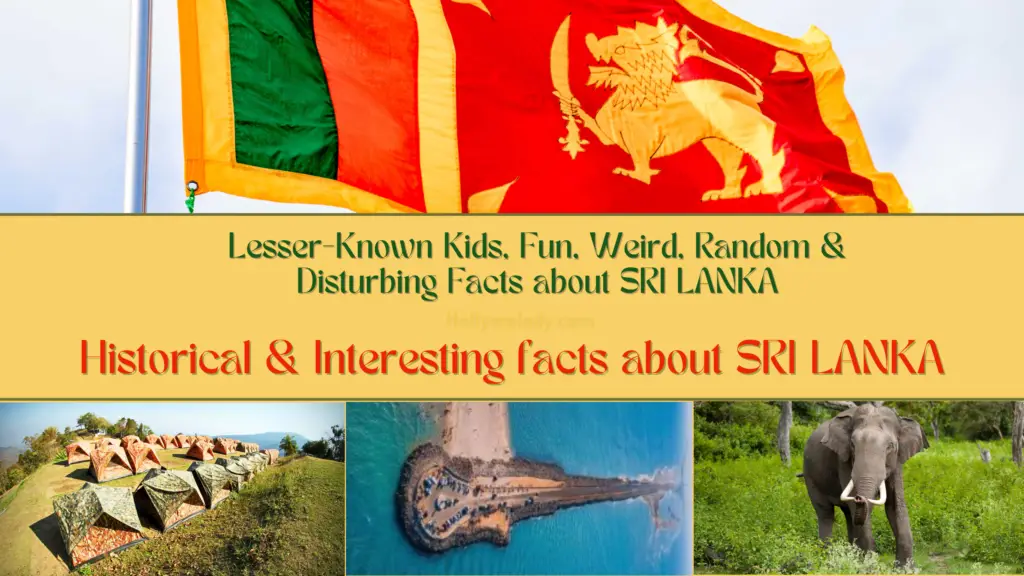Lesser-Known Kids, Fun, Weird, Random & Disturbing Facts about SRI LANKA | Historical & Interesting facts about SRI LANKA

- By
- Aparna Patel
- |
- 24 Feb, 2023
- |
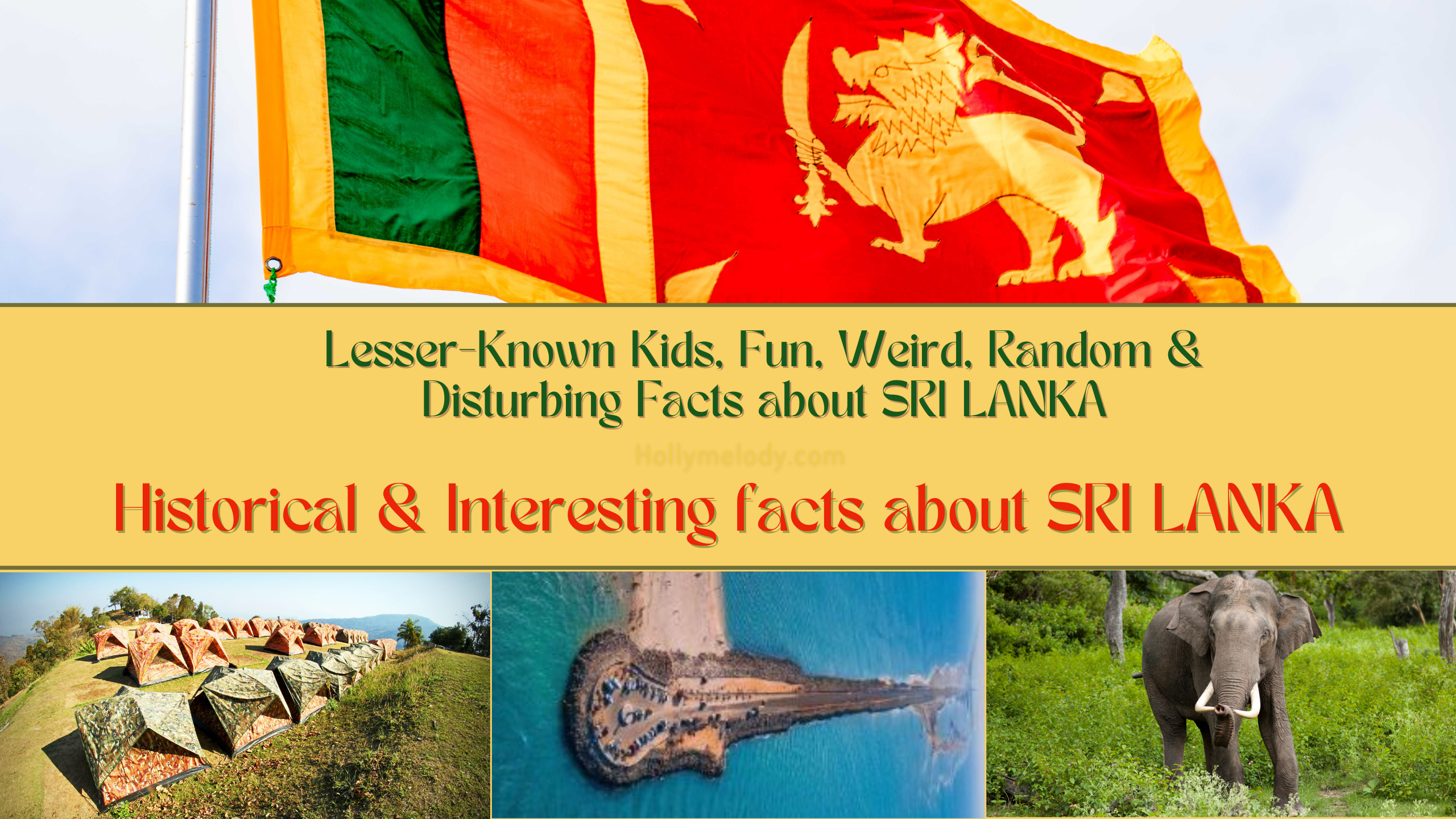
Sri Lanka is a beautiful country where you will find many beaches, greenery, and many elephants. Today we are going to tell you some Interesting and fun facts about Sri Lanka and general information related to this country and its history.
Sri Lanka country, till 1962 its name was Ceylon, which was changed to Lanka in 1962 and Sri Lanka in 1962 by adding the honorable word “Sri”. This country is multi-ethnic and multi-religious.
The history of Sri Lanka is 3000 years old, as well as some evidence of human settlement in the prehistoric times of 1,25,000 years ago. Sri Lanka was known as the beginning of British colonial as Ceylon until 1972. Sri Lanka’s fresh history includes a 13-year civil war, which ended when the Sri Lankan military defeated the Liberation Tiger of Tamil Eelam (LTTE) in 2009.
It is a country with diversity and multi-cultures, as well as Sri Lanka, is home to many religions, ethnic groups, and languages. Sri Lanka has a rich Buddhist heritage. Colombo, the largest city in Lanka, is an important port for maritime transport. Sri Lanka is a beautiful country where you will find many beaches, greenery, and many elephants.
Table of Contents
A: General Facts About SRI LANKA
- Total Area – 65,610 sq km
- Total Coastal Area1 – 3640 km
- Total Population – Around 57 million places in the world
- Total Gross Domestic Product – $ 143 billion (South Asia’s second-richest nation in terms of GDP)
- Literacy Rate – 92.5 percent
- Freedom from the British – 4 February 1948
- Main Capital – Shri Jayavardhanpura Kotte
- Commercial Capital – Colombo
- Currency – Shree Lankan Rupee
- Official Language – Sinhalese, Tamil
- National Flower – Lily
- National Sports – Volleyball
- National Tree – Ceylon Ironwood
- Main religion – Buddhism
- Highest Peak – Mount Pedro or Pidurutalagala at 2,524 m (8,281 ft)
B: Amazing Interesting Fun Facts About SRI LANKA
1. Sri Lanka’s first capital was Anuradhapura, which remained the capital of this country for about 1400 years. That period was known as Anuradhapura Empire.
2. This period was over when the kings of South India attacked this kingdom and take over it. Then the capital of Sri Lanka was changed to Polanaruva.
3. The distance from India to Sri Lanka is just 31 kilometers.
4. By the year 1972, Sri Lanka’s name was Ceylon, which was changed to ‘Lanka’ and in the year 1978, it was renamed ‘Sri Lanka’.
5. The size of Sri Lanka is like a drop of pearls or tears. This is why Sri Lanka is called the Pearl of the Indian Ocean.
7. Sri Lanka is an island that is surrounded by the Indian Ocean in the west and the Bay of Bengal in the east. The region of Sri Lanka is 65,610 sq km.
8. The tallest point in Sri Lanka is Mount Pedro. Climbing on this mountain is not allowed because it is a part of the army. The island’s coastline is 13,640 km.
9. Sri Lanka’s official capital is not Colombo ,it is Sri Jayewardenepura quota.
10. According to the 2019 census, Sri Lanka’s population is approximately 21,008,582 and is 57th in the world in terms of population.
11. 70% of Sri Lankans are believed to be Buddhists while 13% are Hindus, 10% are Muslims, and 7% are Christians.
12. GDP of Sri Lanka is 143 billion, which is the second largest wealthy nation in South Asia in terms of gross domestic product per person.
13. Ceylon Tea is the most exported product in Sri Lanka.
14. Ramayana is the first book in which Sri Lanka has been described in detail. Ramayana is a Sanskrit epic written by Maharishi Valmiki. It is one of the two great epics of Indian literature, the second being the epic Mahabharata. Ramayana has an important place in Hinduism. This epic depicts the Ram avatar of Lord Vishnu. The Ramayana epic has 24000 verses and 500 cantos divided into 7 parts.
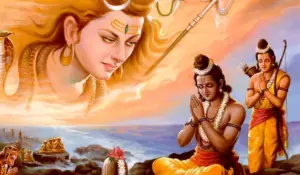
15. 2300 years ago, the entire population of Sri Lanka believed in Hinduism. In the 3rd century BC, Emperor Asoka sent his son Mahendra to spread Buddhism in Sri Lanka, and the king of Sri Lanka declared Buddhism as a religion.
16. On 23 July 1983, the planetary war began between Sri Lankan Tamils and minority Tamils in Sri Lanka, which ended in 2009. According to official figures, about 80 thousand people were killed in this planetary war.
17. There are 9 states and a total of 25 districts in Sri Lanka.
18. The people of Sri Lanka are most educated in South Asia. The literacy rate here is 92%.
19. After World War II, on 4 February 1948 Sri Lanka got independence from the British.
20. Sri Lanka was the first country whose first Prime Minister was a woman.
21. Water fountains are very much found in Sri Lanka, and a significant part of the country’s electricity is produced from these waterfalls.
22. The main food of the people of Sri Lanka is rice, which they eat all three times with curry.
23. At the end of the year 2004, Because of the tsunami, about 200000 thousand people were killed, out of which 40 thousand were in Sri Lanka alone.
24. Sri Lanka’s only international airport is in the city of Colombo.
25. At the beginning of the 20th century, there were about 15,000 elephants in Sri Lanka, but now their number has decreased to 6000.
26. The golden lion in Sri Lankan flag has a sword in his hand above red, it represents the people of Sinhala castes.
Four leaves and golden borders represent Buddhism. Two other green and saffron straps represent the Muslim and Tamil people in the flag. The Tamil people are Hindu, hence the saffron color is depicted for them.
27. There is a Buddhist temple in Kandy city of Sri Lanka, where the relic of one of the teeth of Lord Buddha is still kept safe. Candy was the last capital of the Kings of Sri Lanka and due to this temple, it has been declared a World Heritage Site by UNESCO. Bombings carried out by Liberation Tigers caused much damage to this temple in 1998. But it was repaired and given its original form.

28. ‘Adam’s Bridge
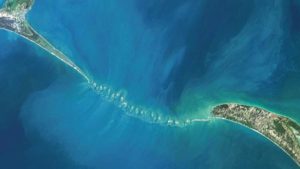
Ramsetu, which is known internationally as ‘Adam’s Bridge‘According to the Hindu religious texts Ramayana, is a bridge, which was built by Lord Vishnu’s Avatar Shriram in the southern part of India, on Rameswaram, Whose other edge connects to Mannar in Sri Lanka. It is believed that the stone which was used to make this bridge is not immersed in the ocean after throwing into the water. What was the reason that this stone did not get drowned in the water? Hindu People regard it as a supernatural occurrence of God while giving religious significance to it, Science believes that the stones used to make the Ram Sethu Bridge are some special types of stones that are called ‘Pumice Stone’. These stones arise from volcanic lava.
Watch Sir Lanka Beauty
29. Lord Shiva established Sri Lanka
According to Hindu mythological history, Lord Shiva established Sri Lanka. According to Shiva’s order, Vishwakarma built a palace of gold for Parvati(wife of Lord Shiva) Ji. Sage Vishva took advantage of Shiva’s innocence and demanded Lankapur’s donation from them. Then Parvati cursed that the incarnation of Mahadev will burn that castle one day and with it, the destruction of your tribe will begin.
41. Sigiriya is The Eighth Wonder
Sigiriya has located 90 km from Kandy, which is a huge fortress of rocks. Around 2,243 meters high ‘Adamas‘ Peak has ‘Sri Pada‘. There are 1.8 meters long-wide footprints of Mahatma Buddha. To get to the rock of Sigiriya you have to climb about 1250 stairs.
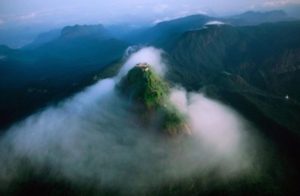
31. Sri Lanka’s national sport
Sri Lanka’s national sport is volleyball, although the most popular sport is cricket. Sri Lanka also won the Cricket
World Cup in 1996.
32. 1996 World Winner
The 1996 World Cup was held for the second time in the Indian subcontinent, which was jointly organized by India, Pakistan, and Sri Lanka. 12 countries participated in this World Cup. The United Arab Emirates, Netherlands, and Kenya participated in the World Cup for the first time. Sri Lanka won at the Lahore ground and won the World Cup title for the first time. Sri Lanka became the third Asian country to win the title after
India and Pakistan.
33. Best Spin Bowler of All Time Muttiah Muralitharan
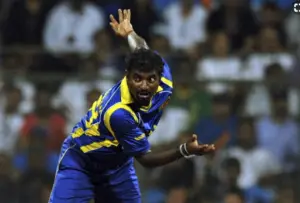
Muralitharan is a Sri Lankan cricketer. He retired from Test cricket in 2010 with his 800th and final wicket on the final ball of his last Test match on 22 July 2010. Muttiah Muralitharan played 133 Test matches and took a record 800 wickets. Shane Warne is behind him, who has 708 wickets in his name. In ODIs also, Muralitharan took a record 534 wickets. Wasim Akram is second with 502 wickets.
34. Sri Lanka’s radio station is one of the oldest radio stations in the world, which started in 1923, just three years after the introduction of radio in Europe.
35. As of 2010, Sri Lanka has 51 newspapers (30 in the Sinhala language, 10 in the Tamil language, and 11 in English), 34 TV stations, and 52 radio stations.
36. You would be surprised to know that Sri Lanka has a literacy rate of 92.5 percent, which is among the most educated countries in developing countries. The main reason for this is that education is free from the primary to the tertiary stage.
37. The famous Sri Lankan liquor is called Arrack, which is made of flow, coconut, rice, and sugarcane. Arak is a distilled alcoholic beverage commonly produced in the Middle East, made from fermented coconut flowers or sugarcane, and also with grains or fruits depending on the country of origin. It is also sometimes called arak.
38.Former Prime Minister of India, Rajiv Gandhi was also killed by LTTE’s people for taking decisions against LTTE.
40. World’s best tea
Sri Lanka is the founder of the world’s number one tea. Sri Lanka’s World Famous Tea is ‘Dilmah’. You can also take this tea with you as a gift. A special kind of beer is made in Sri Lanka, which is called Lion Beer. Treat travel incomplete without visiting the ‘Lakshashala‘ gift shop in Colombo. You can enjoy shopping in Sri Lanka’s first department store ‘Odel’ in Colombo. A car is the best option for traveling in Sri Lanka. Here you will easily find rented cars. You can drive the car yourself.
41. Bentota
Located about 65 km south of Colombo, Bentota is known for its water sports. On the other hand, if you want to enjoy shopping from shops floating on the ocean, then for that you will have to go to Pettah Floating Market.
42. 2019 Sri Lanka Easter bombings
A series of bomb blasts in Sri Lanka on the occasion of Easter Sunday 2019. The blast took place here on Sunday at 8.45 am in Sri Lanka. Three churches and three five-star hotels were bombed in the morning. After this, there are two more bomb blasts in the afternoon. An explosion occurred at St. Anthony’s Church in Kochchikade in the capital Colombo. The second blast took place at KatuwapitiyaChurch in Katana.
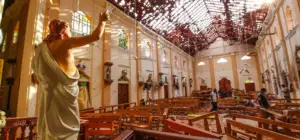
The third blast took place in Batticaloa Church. Apart from this, there are also bomb blasts in the capital Colombo’s five-star Hotel Shangri-La Hotel, Cinnamon Grand, and Kingsbury. Many people have died in these blasts, including foreign tourists. More than 250 people were killed and more than 500 people were injured in the serial blasts in three Sri Lankan churches and three luxurious hotels.Sri Lanka fun facts
The children of Denmark’s billionaire businessman Anders Holch Powlsson were among those killed in the 8 bomb blasts in Sri Lanka on Easter 2019. Three of their four children died in the blast. All three went to Sri Lanka to celebrate the Easter holidays. Powelson is the owner of the international clothing chain bestseller. He is also a shareholder in another clothing company, Asos. Powlson had three daughters and a son, and all four arrived in
Sri Lanka for the Easter holiday. While walking here, Anders’ daughter Elma shared a photo on Instagram with brothers Astrid, Agnes, and Alfred sitting in the swimming pool.
43. No Burka
Muslim women will no longer wear masks in public places in Sri Lanka as the new rules announced by President Maithripala Sirisena became effective on 29 April 2019 because of the Easter day bombings in the country. The new rule was announced by the President on 28 April 2019, prohibiting the wearing
of any kind of dress covering the face. It specifically mentions, ‘Any kind of cloth that is put on the face which is a hindrance to identity.’
44. Muslims around the world fast and pray during the month of Ramadan, but a small group of Muslims in Sri Lanka broke a mosque to differentiate themselves from violent groups.
C: You do not know these UNIQUE facts about the SRI LANKA
Information about Sri Lanka, including many unique facts. Here are a few examples:
- Sri Lanka is known for its vast tea plantations and is the fourth largest tea producer in the world.
- Sri Lanka has the highest literacy rate in South Asia, with a literacy rate of over 90%.
- The world’s first female prime minister, Sirimavo Bandaranaike, was from Sri Lanka and was elected in 1960.
- Sri Lanka has eight UNESCO World Heritage sites, including the ancient city of Anuradhapura, the Sigiriya Rock Fortress, and the Temple of the Tooth in Kandy.
- The national flag of Sri Lanka features a lion holding a sword, representing the bravery of the Sri Lankan people.
- The island nation is home to the largest concentration of leopards in the world, with the Yala National Park being a popular destination for leopard spotting.
- Sri Lanka was the first country in the world to have a democratically elected female head of state, with Sirimavo Bandaranaike serving as prime minister from 1960 to 1965 and again from 1970 to 1977.
- The country’s official languages are Sinhala and Tamil, but English is widely spoken and is considered the language of business and commerce.
- Sri Lanka was once known as Ceylon and gained independence from British colonial rule in 1948.
- Sri Lanka is home to the world’s oldest living tree, the Sri Maha Bodhi tree, which is over 2,000 years old and is considered a sacred Buddhist site.
D: Unknown these Facts about the SRI LANKA?
Here are some lesser-known facts about Sri Lanka:
- Sri Lanka is one of the few countries in the world where you can see the largest mammal (the blue whale) and the largest land mammal (the elephant) in a single day.
- Sri Lanka is the only country in the world where you can find all 15 species of primates, including the endemic purple-faced langur and the toque macaque.
- The world’s oldest human-planted tree, known as Jaya Sri Maha Bodhi, is located in Sri Lanka and is believed to have been planted over 2,250 years ago.
- The highest point in Sri Lanka is Pidurutalagala, which stands at 8,281 feet (2,524 meters) above sea level.
- The traditional Sinhalese New Year, known as Aluth Avurudhu, is celebrated in April and is a time of feasting, family gatherings, and religious ceremonies.
- Sri Lanka has a rich history of traditional medicine, including the use of herbal remedies, acupuncture, and Ayurveda, which is still practiced widely throughout the country.
- The Sri Lankan elephant is a distinct subspecies of the Asian elephant and is smaller than its Indian counterpart, with smaller ears and a more rounded back.
- Sri Lanka is the birthplace of cinnamon, which has been traded around the world since ancient times.
- The country has a unique cuisine that is influenced by Indian, Portuguese, Dutch, and British culinary traditions, with dishes such as hoppers, string hoppers, and kottu roti being popular.
- Sri Lanka is home to some of the world’s most beautiful beaches, including Unawatuna, Mirissa, and Tangalle, which offer crystal-clear waters, pristine sands, and plenty of opportunities for water sports and relaxation.
E: Kids, Fun, Random Facts about the SRI LANKA
Here are some fun and random facts about Sri Lanka that kids might find interesting:
- Sri Lanka is known for its colorful festivals, including the Kandy Esala Perahera, a ten-day procession of elephants and dancers that takes place in July or August.
- Sri Lanka is home to a rare species of lizard called the hump-nosed lizard, which is endemic to the island.
- Sri Lanka has its own version of the game of cricket, which is a national obsession and is played on every available patch of green.
- The national animal of Sri Lanka is the Sri Lankan junglefowl, a colorful bird that is closely related to domestic chicken.
- Sri Lanka has a long history of gem mining, with some of the world’s most valuable sapphires, rubies, and emeralds coming from the island.
- Sri Lanka is famous for its spicy cuisine, including dishes such as devilled chicken, crab curry, and egg hoppers.
- Sri Lanka has a diverse range of wildlife, including leopards, sloth bears, sambar deer, and many species of primates.
- Sri Lanka is home to a number of ancient ruins and monuments, including the rock fortress of Sigiriya and the ancient city of Anuradhapura.
- The Sri Lankan currency is called the rupee, and there are coins in denominations of one, two, five, and ten rupees.
- The island nation of Sri Lanka is surrounded by the Indian Ocean, making it a popular destination for surfing, swimming, and other water sports.
F: Random, Weird Facts about the SRI LANKA?
Here are some random and weird facts about Sri Lanka:
- Sri Lanka is the only country in the world where you can find a natural phenomenon known as “jumping fish.” These fish are able to leap out of the water and “fly” through the air for distances of up to 200 feet.
- Sri Lanka was the first country in the world to have a dedicated hospital for elephants, the Pinnawala Elephant Orphanage.
- The town of Ratnapura in Sri Lanka is known as the “City of Gems” and is home to some of the world’s most valuable gemstones.
- The traditional Sri Lankan drum, known as the Thammattama, is made from the skin of monitor lizards.
- Sri Lanka has a unique martial art form called Angampora, which dates back over 2,000 years and incorporates techniques such as sword fighting, archery, and hand-to-hand combat.
- The ancient city of Anuradhapura in Sri Lanka is home to a sacred fig tree known as the Jaya Sri Maha Bodhi, which is said to have grown from a cutting of the original bodhi tree under which the Buddha attained enlightenment.
- The Sri Lankan tradition of stilt fishing, where fishermen perch on stilts in the water, is believed to date back over 100 years.
- Sri Lanka is the only country in the world where you can find all seven species of marine turtle.
- The Sri Lankan city of Galle is home to a unique tradition of “stick fighting,” where competitors battle each other with long bamboo poles.
- The island of Sri Lanka was once connected to the Indian subcontinent by a land bridge, which was submerged under the ocean due to rising sea levels over 7,000 years ago.
G: Historical Facts about the SRI LANKA
Sri Lanka has been ruled by the royal Sinhala dynasty since ancient times. From time to time it has also been attacked by the South Indian dynasties. Buddhism arrived in the third century BCE when Ashoka’s son Mahendra came here.
European powers established their trade in Sri Lanka in the sixteenth century. The country became an exporter of tea, rubber, sugar, coffee, cinnamon, and other spices. First Portugal made its fortress near Colombo. Gradually, the Portuguese made their dominion in the surrounding areas.
The residents of Sri Lanka appealed to the Dutch people for help. In 1630, the Dutch attacked the Portuguese and killed them, but this also affected the Sri Lankans and the Dutch imposed more taxes on them.
By 1660, the attention of the British also went to this. After the French took possession of the Netherlands, the British feared that the Dutch territories of Sri Lanka would become French. Thereafter, they began to take control of the Dutch territories.
By 1800 AD, the British had control over coastal areas. By 1818, the last kingdom of Kandy was also surrendered and thus the whole of Sri Lanka became British. The country gained complete independence from the United Kingdom on 4 February 1948 after World War II.
Ethnic conflict
There is a civil war in Sri Lanka between the majority Sinhala and the minority Tamils beginning on 23 July 1983. This is primarily a war between the Sri Lankan government and the separatist faction LTTE. The LTTE was defeated by the Sri Lankan government in May 2009 after 30 months of military operations.
This civil war, which lasted for nearly 25 years, killed a large number of people from both sides and this war proved fatal to the economy and environment of the island nation.
Due to the war policies adopted by the LTTE, 32 countries have placed it in the category of terrorist groups, which includes India, Australia, Canada, many member states of the European Union, and many other countries. According to government statistics, about 80,000 people have died in this ethnic conflict lasting a quarter-century.
Sri Lanka has a rich and complex history that spans over 3,000 years. Here are some historical facts about Sri Lanka:
- Sri Lanka was originally inhabited by indigenous people known as the Veddahs, who still live in the island’s interior today.
- The first known civilization in Sri Lanka was the Anuradhapura Kingdom, which lasted from 377 BC to 1017 AD and was known for its impressive irrigation systems and Buddhist monuments.
- Sri Lanka has a long history of trade with other parts of the world and was known as Serendib in ancient times. The country was a key stop on the ancient Silk Road trade route.
- The island was ruled by various kingdoms and dynasties over the centuries, including the Polonnaruwa Kingdom, the Kandyan Kingdom, and the Portuguese, Dutch, and British colonial powers.
- The Portuguese first arrived in Sri Lanka in 1505 and established a presence on the island, followed by the Dutch in 1658 and the British in 1796.
- Sri Lanka gained independence from British colonial rule in 1948 and has been a republic since 1972.
- The country’s civil war, which lasted from 1983 to 2009, was a major event in Sri Lanka’s recent history. The conflict pitted the Sri Lankan government against the Tamil Tigers, a separatist group seeking an independent Tamil state in the north and east of the country.
- Sri Lanka is known for its Buddhist heritage and is home to some of the world’s most important Buddhist sites, including the Temple of the Tooth in Kandy and the ancient city of Anuradhapura.
- The island also has a rich literary tradition, with works such as the Mahavamsa, a chronicle of Sri Lankan history, and the poetry of the Sinhalese writer Martin Wickramasinghe.
- Sri Lanka has a diverse cultural heritage, with influences from India, China, Portugal, the Netherlands, and Britain. This is reflected in the country’s art, architecture, cuisine, and customs.
H: Some important DAYS in the history of the SRI LANKA
Here are some important days in the history of Sri Lanka:
- Independence Day: Sri Lanka celebrates its Independence Day on February 4th every year, in commemoration of the day in 1948 when the country gained independence from British colonial rule.
- Vesak: Vesak is a Buddhist festival that celebrates the birth, enlightenment, and death of the Buddha. It is a public holiday in Sri Lanka and is celebrated in May.
- Poson: Poson is a festival that commemorates the introduction of Buddhism to Sri Lanka by the Indian monk Mahinda in the 3rd century BC. It is celebrated in June and is a public holiday in Sri Lanka.
- Tamil Thai Pongal: Tamil Thai Pongal is a harvest festival celebrated by the Tamil community in Sri Lanka. It is celebrated in January and is a public holiday in some parts of the country.
- Maha Shivaratri: Maha Shivaratri is a Hindu festival that celebrates the god Shiva. It is celebrated in February and is a public holiday in Sri Lanka.
- Christmas: Christmas is celebrated by the Christian community in Sri Lanka and is a public holiday. The holiday is celebrated on December 25th.
- Eid al-Fitr: Eid al-Fitr is a Muslim holiday that marks the end of Ramadan, the month of fasting. It is a public holiday in Sri Lanka and is celebrated in May or June.
- National Day: Sri Lanka celebrates its National Day on February 4th, the same day as Independence Day. The holiday is a celebration of the country’s cultural and ethnic diversity.
- International Women’s Day: International Women’s Day is celebrated on March 8th around the world, including in Sri Lanka. The day is a celebration of women’s achievements and a call for gender equality.
- International Day of Vesak: The International Day of Vesak is a United Nations holiday that celebrates the Buddha’s birth, enlightenment, and death. The holiday is celebrated in May or June and is an important day for Buddhists in Sri Lanka.
I: Important DATE in SRI LANKA History
There are many important dates in Sri Lanka’s history, but here are a few significant ones:
- 543 BC – The Buddha’s visit to Sri Lanka: According to tradition, the Buddha visited Sri Lanka in the 6th century BC and converted King Devanampiya Tissa to Buddhism, establishing the religion on the island.
- 250 BC – The reign of King Ashoka: After the death of the Buddha, the Indian emperor Ashoka sent his son Mahinda to Sri Lanka to spread Buddhism. Mahinda’s mission was successful, and Ashoka is credited with playing a key role in the spread of Buddhism in Sri Lanka.
- 993 AD – The coronation of King Vijayabahu I: Vijayabahu I became king of the Polonnaruwa Kingdom in 993 AD and is credited with reviving Buddhism and uniting Sri Lanka after a period of political fragmentation.
- 1505 – The arrival of the Portuguese: The Portuguese arrived in Sri Lanka in 1505 and established a foothold on the island, marking the beginning of European colonial rule.
- 1815 – The Kandyan Kingdom falls: The Kandyan Kingdom, the last independent kingdom in Sri Lanka, fell to the British in 1815, bringing the entire island under colonial rule.
- 1948 – Independence from British rule: Sri Lanka gained independence from British colonial rule on February 4, 1948, after years of struggle for self-rule.
- 1983 – Start of the Sri Lankan Civil War: The Sri Lankan Civil War began in 1983, pitting the government against Tamil separatist groups seeking an independent state in the north and east of the country.
- 2009 – End of the Sri Lankan Civil War: After years of fighting, the Sri Lankan government declared victory over the Tamil Tigers in 2009, ending the long-running civil war.
J: Important Historical events related to the SRI LANKA country
Here are some important historical events related to Sri Lanka:
- 11 September 1817 – The Great Rebellion of 1817-18 begins in Sri Lanka.
- 04 February 1948 – Sri Lanka, then called Ceylon, became independent from British rule.
- 01 September 1979 – Sri Lanka Army Women’s Corps was established.
- July 23, 1983 – The first war between the LTTE rebels known as the Tamil Tigers and the Sri Lankan government begins.
- October 11, 1987 – India’s Peace Army launches Operation Pawan in Sri Lanka. The campaign was launched to liberate Jaffna by destroying the LTTE’s occupation.
- 21 April 1987 – More than 100 people died in a bomb blast in Sri Lanka’s capital Colombo.
- 02 January 1989 – Prime Minister Ranasinghe Premadasa takes over as the third President of Sri Lanka.
- 21 May 1991 – Former Prime Minister of India Rajiv Gandhi was killed in a suicide bomb attack in Sriperumbudur in Tamil Nadu. Angered by sending peace forces to Sri Lanka, the LTTE, an organization of Tamil rebels, launched a suicide attack on Rajiv.
- 02 March 1991 – A car bomb blast in Sri Lanka’s capital Colombo kills 19 people, including the country’s Deputy Minister of Defense Ranjan Vijayaratne.
- 21 April 2019– In a series of bomb blasts in Sri Lanka on the occasion of Easter,250 people were killed and more than 500 people were injured
- The arrival of Buddhism: According to tradition, Buddhism was introduced to Sri Lanka in the 3rd century BCE by the Indian monk Mahinda, who converted King Devanampiya Tissa to Buddhism.
- Kingdoms of Anuradhapura and Polonnaruwa: From around the 3rd century BCE to the 13th century CE, Sri Lanka was ruled by a series of kingdoms centered in the cities of Anuradhapura and Polonnaruwa. These kingdoms left behind impressive architectural and artistic legacies, including the ancient city of Anuradhapura and the rock fortress of Sigiriya.
- European colonialism: From the 16th century onward, Sri Lanka was ruled by a series of European colonial powers, including the Portuguese, Dutch, and British. These colonial powers had a profound impact on Sri Lankan society and culture, leaving behind lasting legacies such as the country’s tea plantations and cricket culture.
- Ethnic tensions: Sri Lanka has been plagued by ethnic tensions between the Sinhalese majority and the Tamil minority. The conflict boiled over into a civil war that lasted from 1983 until 2009 when the government declared victory over the Tamil Tigers.
- Tsunami: In 2004, Sri Lanka was hit hard by a devastating tsunami that killed over 35,000 people and caused widespread destruction along the country’s coastlines.
- Economic development: In recent decades, Sri Lanka has made significant strides in economic development, with the country’s economy growing rapidly and tourism becoming a major industry. However, the country still faces challenges such as poverty and political instability.
K: Tourism in Sri Lanka
Sri Lanka is known for its natural beauty and there is a crowd of tourists. There are many famous places to visit, but you will be happy to see the beauty of some special places present here.
1. Ella
You will find the fun of seeing the train passing through the mountains and the forest and the beautiful view outside.
2. Nuwara Eliya
The Kelani River originating from the Nuwara Eliya Mountains is considered the lifeline of Colombo. Nuwara Eliya is a mountain town located at an altitude of 2000 meters above sea level. The place was named Nuwara Eliya after the nelu flower which blooms once in fourteen years.
3. Pinnawala Elephant Orange
You will not want to come back from this place of Sri Lanka soon because enjoying the feat of elephants and their children will give you a different experience.
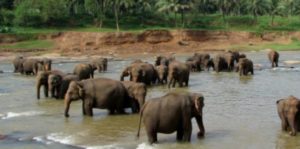
4. Polonnaruwa
The fun of seeing old-timey things is different and here you will get a chance to interact with many such things.
5. Dambulla Cave Temple
In this temple of Sri Lanka, you will see amazing views of craftsmanship. There are 150 idols of Lord Buddha.
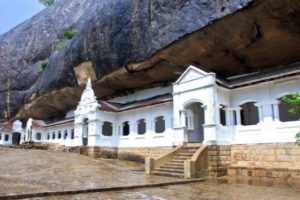
If you know any new things about Sri Lanka, then definitely tell through the comments so that other people can read, thanks.
Here are some key points about tourism in Sri Lanka:
- Sri Lanka is known for its beautiful beaches, lush green hills, and rich cultural heritage, all of which make it a popular tourist destination.
- The tourism industry in Sri Lanka employs over 500,000 people and contributes significantly to the country’s economy.
- The peak tourist season in Sri Lanka is from December to March when the weather is dry and sunny in most parts of the country.
- Some of the most popular tourist attractions in Sri Lanka include the ancient city of Anuradhapura, the rock fortress of Sigiriya, the beaches of the south coast, and the hill country town of Ella.
- Sri Lanka is also known for its wildlife, and visitors can go on safari in national parks such as Yala, Wilpattu, and Udawalawe to see elephants, leopards, and other animals in their natural habitats.
- The country has a well-developed tourism infrastructure, with a range of accommodation options from budget guesthouses to luxury resorts.
- Sri Lanka is also a popular destination for adventure tourism, with opportunities for hiking, mountain biking, surfing, and other activities.
- The Sri Lankan government has implemented measures to promote sustainable tourism, including a ban on single-use plastics and initiatives to promote eco-tourism.
- Sri Lanka has faced challenges in recent years due to the Easter Sunday bombings in 2019 and the COVID-19 pandemic, but the government and tourism industry are working to recover and attract visitors back to the country.
- Visitors to Sri Lanka are required to obtain a visa before arrival, but the process is relatively straightforward and can be done online.
Read More Amazing Facts:
- Facts about Spain
- Facts about Finland
- Facts about Norway
- Facts about the USA
- Facts about India
- Facts about England
- Facts about France
Search Posts
Latest posts
-
5 Mar, 2024
Why prohibit engine braking?
Popular posts
-
5 Mar, 2024
Why prohibit engine braking?
